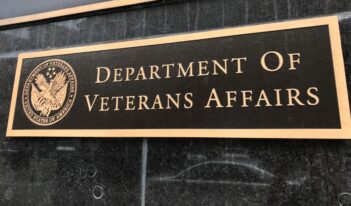
Delays in several large construction projects raise concerns about agency mismanagement.
The U.S. Department of Veterans Affairs (VA) has increased costs and delayed schedules for some of its largest construction projects in its continued struggle to keep pace with veterans’ needs.
A recent report from the U.S. Government Accountability Office (GAO) at least partially attributes mismanagement of a major project in Denver to the VA’s failure to follow its own policies and procedures. In response to concerns from the construction industry about poor planning in federal building projects, the VA attempted in 2012 to implement a new Integrated Design and Construction (IDC) method, which involves consulting with a contractor early in the design process “to identify any potential problems early” and “ensure a well coordinated effort in designing and planning a project.”
However, in April 2013, the GAO found that the VA failed to adopt the IDC method for the Denver project. Instead, the VA hired a contractor after the initial plans had been drawn, and then decided to adopt the IDC method mid-project. The GAO later found that although “some cost increases and schedule delays result from factors beyond [the] VA’s control,” there were identifiable “weaknesses in [the] VA’s construction management processes.” Additionally, the VA itself admits that its failure to involve the contractor in the design phase necessitated changes later on, which increased costs and led to schedule delays.
In December 2014, more than a year after local veterans gathered at the Denver job site to protest the VA’s delay in building a much-needed and long-awaited medical facility, the U.S. Civilian Board of Contract Appeals ruled that the VA had breached its contract by failing to provide a design that could be built within budget. The court also found that the VA failed to adhere to its IDC method, despite having contracted to do so. According to the ruling, the contractor had urged the importance of his early involvement in the design process, but the VA’s project management plan states that it was reluctant to adopt this “new contracting approach” because the agency’s culture “does not encourage or is [not] comfortable with new approaches.”
Construction delays are not limited to Denver. Projects in Las Vegas, New Orleans, and Orlando scheduled for completion over the last five years have been delayed by anywhere from 14 to 86 months. Construction costs have exceeded initial estimates by 66 to 144 percent. The GAO’s report identifies the Denver project as having the highest cost increase — the initial estimate of $328 million increased to $800 million as of November 2012, and the contractors indicated last year that costs might still continue to rise.
The VA has undergone significant attempts at reform over the last six months under Secretary Robert A. McDonald, who succeeded former Secretary Eric Shinseki last year. Shinseki resigned shortly after the VA Office of Inspector General (OIG) released a report exposing agency mismanagement and record falsification designed to conceal wait times for veterans seeking care. The OIG findings were published around the same time that news reports surfaced of veterans who died while waiting for VA appointments.
Shortly after Shinseki’s resignation, President Obama signed the Veterans Access, Choice, and Accountability Act of 2014, allocating more than $16 billion to help the VA improve access to medical care. The Act required the VA to create a Veterans Choice Program, which it did at the end of last year, so that veterans experiencing significant wait times can seek care from non-VA providers. The Act also provided for hiring of additional doctors and medical staff, and leasing of additional facilities.
The problems associated with planning and executing the construction projects predate those changes at the VA. In April 2013, the GAO first issued a report that included recommendations on how the VA could improve its management of its 50 major medical facility construction projects. The report from April 2013 highlighted factors contributing to cost increases and schedule delays, including the agency’s reliance on inexperienced staff, rather than outside specialists, to make decisions on medical equipment and planning; disorganized and insufficient communications with construction contractors; and the VA’s complicated internal procedures for processing and approving construction contract changes.
The GAO’s most recent report concludes that the VA has implemented the April 2013 recommendations in several of its ongoing projects, although the VA was unable to provide the GAO with complete information about cost estimates and scheduling. Despite these improvements and Secretary McDonald’s reform efforts, critics point to these unfinished medical facilities as examples of widespread agency mismanagement. According to the GAO’s new report, the VA’s own Construction Review Council, which the agency established in 2012 to oversee these types of projects, found that “the challenges identified on a project-by-project basis were not isolated incidents, but were indicative of systemic problems facing [the] VA.”
Critics of the VA argue that such deficiencies in planning, organization, and communication between agency officials and private contractors waste millions of dollars — money that could instead be spent on providing timely access to health care for veterans already experiencing treatment delays.



